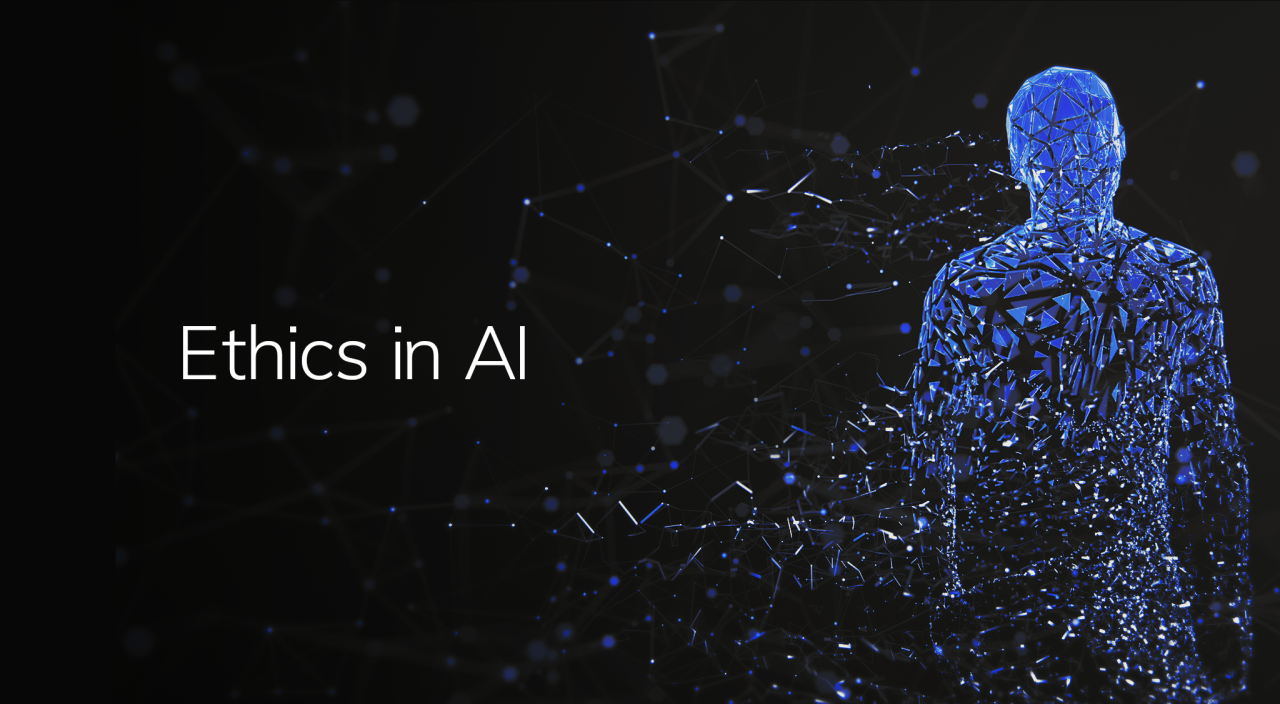
mso-ansi-language:EN-US">Ethics of AI in Public Policy
Artificial Intelligence, or AI,
means using computers and machines to think and act like humans. AI can learn
from data, solve problems, understand language, and even make decisions. Public
policy means the rules and plans made by the government to help people and
solve problems in the country. When AI is used in making or applying public
policies, it becomes very powerful. For example, AI can help the government
find out which areas need more hospitals or which students should get
scholarships. It can also check who should get food rations or financial help.
This saves time and helps make better decisions.
But even though AI is very
smart, it is not perfect. That’s why we need to think about ethics. Ethics means knowing what is right
and wrong. When AI is used in public policy, we must make sure that it is fair,
safe, and respects everyone’s rights. We should not use AI in ways that harm
people or treat them unequally. There are some important ethical problems we
must look at carefully.
The first problem is bias
and fairness. AI learns from data. If the data is unfair or has
mistakes, AI will also make unfair decisions. For example, if an AI system is
used to select students for government jobs and it has only learned from old
data that favored boys over girls, then it might reject many smart girls. That
would not be fair. So, we must check that the data used by AI is correct and
equal for all.
Another problem is privacy.
AI often uses personal information like names, income, health records, or where
a person lives. If this information is not kept safe, it can be misused. For
example, if a health app made by the government collects your disease details
without asking, that’s a privacy problem. People have the right to keep their
personal information private, and the government must protect that.
One more important issue is accountability,
which means responsibility. If an AI system makes a mistake, who will be
blamed? Is it the person who made the AI? The government? Or the machine
itself? For example, if someone’s pension is stopped because the AI thought the
person had died, who will fix this error? There must be a clear way to find and
correct such mistakes, and someone must take responsibility.
Another key issue is transparency.
This means that people should be able to understand how the AI made a decision.
But sometimes, AI systems are like a black box – they give results, but we
don’t know how they did it. If a poor family is removed from a food program by
AI, they must be told why. People have the right to know how decisions are
made, especially when those decisions affect their lives.
Job loss is
also a big concern. When AI is used in government offices or services, it can
do many tasks that were earlier done by humans. This can lead to job loss for
many workers. For example, if AI is used to collect taxes or give out fines for
traffic rules, it might replace people who used to do those jobs. While AI
brings speed and accuracy, it can also hurt families who depend on those jobs.
Lastly, there is the risk of misuse of AI. Powerful AI systems can be used to
spy on people, track their movements, or stop them from speaking freely. For
example, in some places, face recognition cameras are used to watch people in
public, and this can stop them from attending peaceful protests. AI should
never be used to control people or take away their freedom.
To solve these problems, we must
use AI ethically in public policy. First, the government should make strong
rules and laws for using AI. These rules should say what AI can and cannot do.
Second, humans should always check the decisions made by AI. Important
decisions should not be left to machines alone. Third, AI systems must be
transparent. People must be told what data was used, how the AI made its
decision, and how they can complain if something goes wrong. Fourth, people’s
private information must be protected. No one should be allowed to collect or
use your data without your permission. Fifth, AI must be tested to make sure it
is fair and equal for all people, no matter their caste, religion, gender, or
background. Finally, people should have the right to speak up if AI harms them.
There should be a system to appeal or correct any mistake.
Let us now look at some real
examples. In India, the Aadhaar system uses AI to match fingerprints and iris
scans. It is used to give government services. But sometimes, poor people were
denied food just because the machine could not match their fingerprint. This
raised questions about fairness and safety. In the United Kingdom, AI is used
in “predictive policing” to guess where crimes may happen. But the AI often
focuses more on poor areas, which is unfair. In Canada, AI helps with
immigration decisions. But some people were rejected without knowing the reason.
Now, the government is working to make the system more clear and just.
In the end, AI can help the
government work better and faster. It can help reach the right people with the
right support. But we must never forget the importance of ethics. Technology
should always be used in a way that is fair, honest, and respectful of people’s
rights. We must ask: Is this AI decision fair? Is it safe? Is it correct? And
if something goes wrong, how can we fix it?
As future citizens and leaders,
it is important for young people like you to understand both the power and the
problems of AI. Always remember: machines
should serve people, not control them. AI in public policy should make life
better for all, especially the poor and the weak, not just the rich and powerful.
That is the heart of ethical AI.
mso-ansi-language:EN-US">
mso-ansi-language:EN-US">
Comments (0)
Categories
Recent posts


Delhi Election Analysis 2025
10 Feb 2025
Analyzing the Impact of EWS Reservation ...
6 Feb 2025
Evaluating the Urban Heat Island Effect ...
6 Feb 2025



